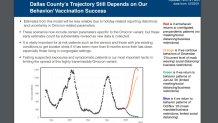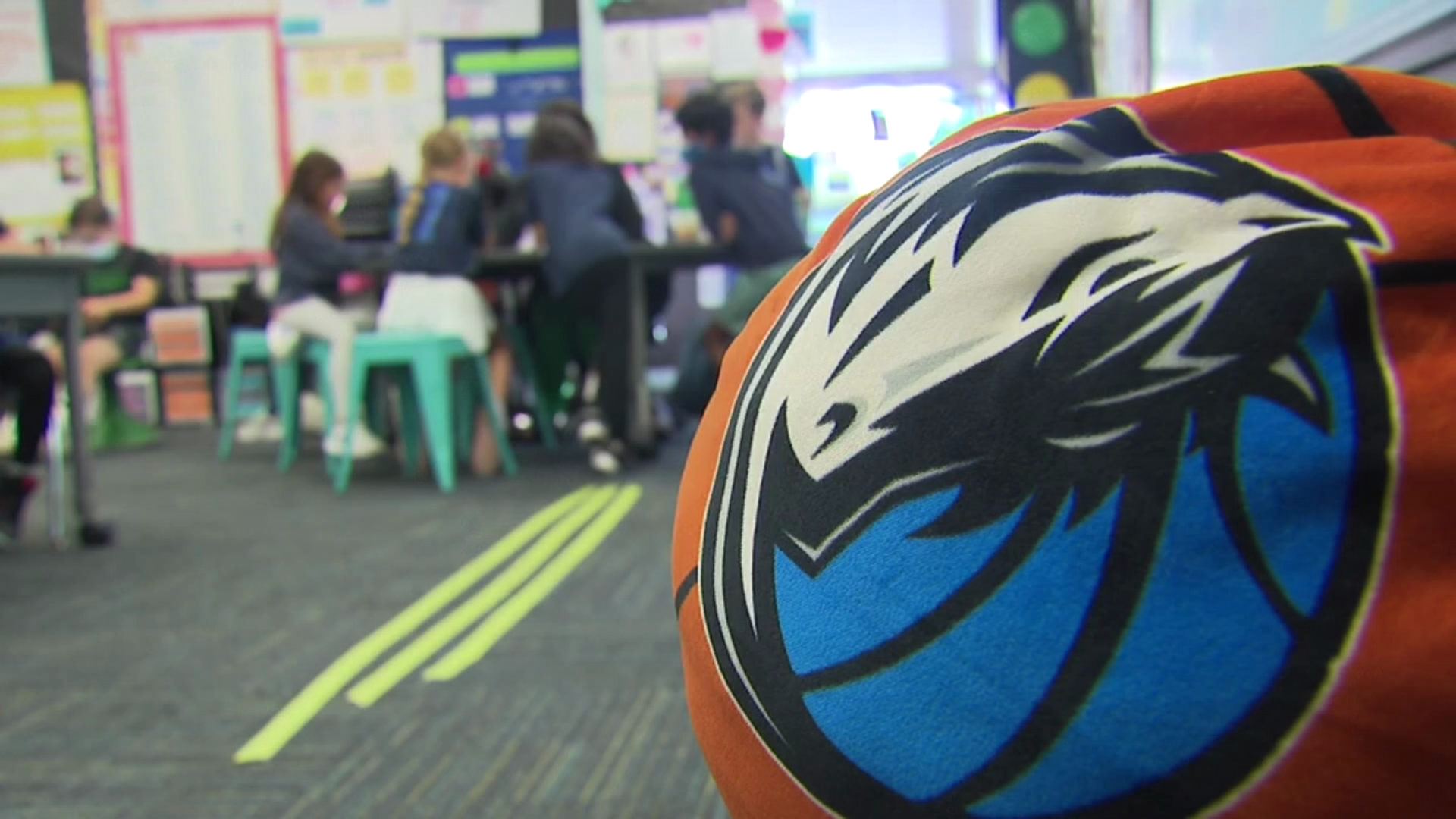The Omicron variant is now the dominant variant of SARS-CoV-2 in North Texas.
UT Southwestern released its latest modeling projections, which say that Omicron now accounts for 90% of the cases in Texas and surrounding states.
In the UTSW genomic sequencing lab, the fast-spreading variant makes up 95% of all positive results sequenced from COVID-19 samples.
"The Dallas/Fort Worth area has very high levels of COVID. At this point, we've got a lot of Omicron and so the risk of transmission is quite high," UTSW Professor of Internal Medicine and Chief of the Division of Infectious Diseases and Geographic Medicine Dr. Trish Perl. “Frankly, I haven’t actually ever really seen anything quite as dramatic as how quickly this particular variant has emerged."
Get DFW local news, weather forecasts and entertainment stories to your inbox. Sign up for NBC DFW newsletters.
The DFW Hospital Council reported 1,190 COVID-19 patients in North Texas hospitals as of Monday, Dec. 27. That’s the highest number since mid-October.
The council said the area is approaching 10% of bed capacity being COVID-19 patients and approximately one in five patients in ICU has COVID-19. Most of those patients are unvaccinated.
Local
The latest news from around North Texas.
It also reports more than 40 pediatric COVID-19 hospitalized patients.
As of Tuesday, 20 children were being treated in the hospital at Cook Children’s. Five of those are in the ICU and officials said those numbers will likely go up in the next two weeks, as pediatricians also battle an uptick in flu and RSV cases.
"We're still on that upswing and we probably aren't going to see the total impact on the healthcare system for the next two to three weeks," said Dr. Perl.
For the vaccinated, infections have been mild. For the unvaccinated, including children under 5, it can be dangerous.
According to UTSW COVID-19 Forecast for the DFW region, hospitalizations could spike in the coming weeks. Here's a visual from the report on what that would look like for Dallas County's trajectory:

The black dots show actual occupied beds to date. The red and orange lines showing a future surge in demand for hospital bed space could happen if everyone does not mask up and continues the same social behaviors we've seen this month.
The green and blue lines toward the bottom show what would happen if the community collectively scales things back and returns to behaviors seen in summer and fall 2020.
Cell phone data is also showing people are shopping, going out and using public transit to near pre-pandemic levels in some counties. That's why doctors said it's important for people who are eligible to make sure they get vaccinated or their booster shot.
“The good news is if we follow what other parts of the world have seen -- South Africa as well as the United Kingdom -- we will have a very rapid increase and then hopefully see a rapid decrease," said Dr. Perl.
She clarified that hopeful decrease can only happen if people collectively stay on top of wearing masks, social distancing, getting vaccinated or boosted, and testing.
Doctors said cough, congestion, runny nose and fatigue appear to be main symptoms with the omicron variant.




